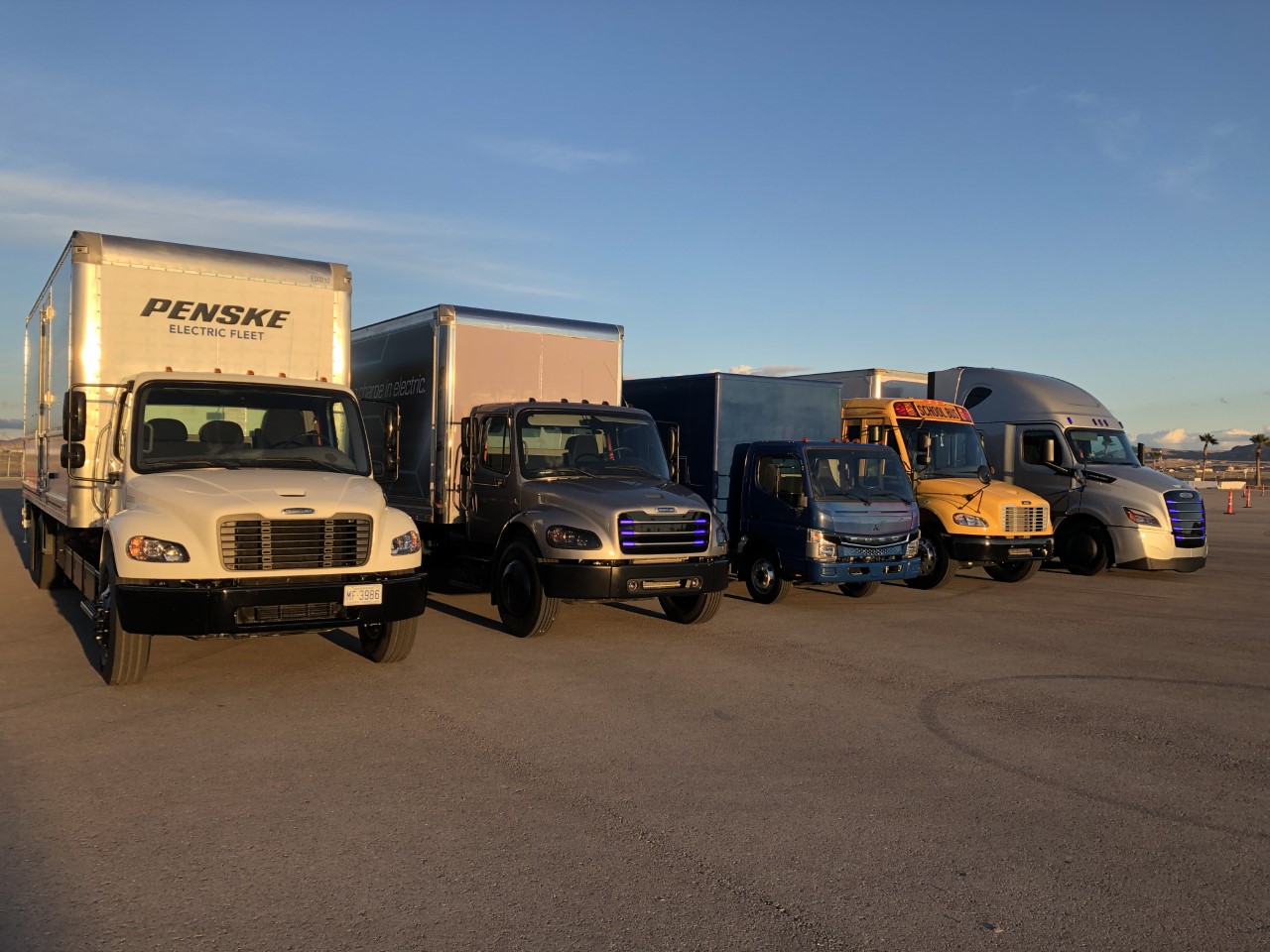Daimler eyes electric truck production in 2021

LAS VEGAS, Nev. – Daimler Trucks North America has handed over keys for the first in a series of 30 battery-electric trucks – a mixture of eCascadias and eM2s – and it’s already focusing on plans to begin full production in 2021.
But there are plenty of lessons to learn about the underlying technologies and business cases along the way.
The first of the trucks are being referred to as an “innovation fleet” that will be used to test equipment in real-world operating environments with the help of Penske and NFI National Freight, primarily on the U.S. West Coast. And a new Freightliner Electric Vehicle Council was established in October to gain insights from 30 customers with strong use cases for electric trucks – exploring everything from deployment strategies to current legislation, charging infrastructure, and service support.
Central to any of Daimler’s future electric vehicle rollouts will be a new eConsulting service, which will explore the electric trucks, assess routes, analyze economic feasibility, provide financing, deploy charging infrastructure, support maintenance and operations, manage the fleet, and deal with the vehicle’s end of life. Details on how customers would pay for that support has not yet been established.
“It’s not only the truck itself,” explains Andreas Jurtzka, senior e-mobility lead for Daimler Trucks North America. “It’s very definitely close with the customer, and then the utilities and the infrastructure.”
“Nobody has a clue right now what the TCO [total cost of ownership] looks like,” he adds, noting that funding for incentives are also a “big deal”.

But the choice of early truck models clearly reflects business segments that Daimler believes will be best served by electric trucks.
“The medium-duty area is probably more fruitful,” Jurtzka says, noting how range is still a concern for Class 8 trucks in particular. The 550 kWh needed to run an eCascadia, for example, equates to 32 of the 17.6 kWh systems that can power electric Smart cars.
The eCascadias draw on four electric motors overall, with hub motors at each end of two axles. The eM2, meanwhile, includes a mid-mounted electric motor and conventional driveline, although the ultimate target is to have a motor included in its axle instead.
The eM2 and its 325 kWh batteries offer a 370-km range, generate a peak 270 kw, and can reach an 80% state of charge in about 60 minutes. The eCascadia has a 400-km range but requires 550 kWh batteries, delivering a peak of 730 kW. The company believes such a range is currently “logical and realistic” for an electric Class 8 truck.
The electrification clearly involves more than pulling out the engines, aftertreatment systems and fuel tanks. Belt-driven accessories like HVAC systems and compressors now require electric motors of their own. The accessories, batteries and axles also need cooling systems. “There’s a lot of piping that goes on, and cooling every different part of the truck differently,” Jurtzka says.
Fit and finish becomes particularly important as well. The trucks run silently, and there’s little vibration in the cab. But in the silence of the prototype vehicles on a test track, it was easy to become focused on sounds like the tick-tick of a fan, a steering pump, and a cabinet that wasn’t properly latched. There was no running engine to help mask sounds like those.
And while electric trucks are expected to present fewer ongoing maintenance demands with the lack of combustion engines, they still present some unique maintenance needs.
“It’s not the driver who now goes into the engine to see if he can fix something,” Jurtzka says. Even maintenance teams need extra training to protect themselves around the underlying high-voltage systems.
Charging challenges also extend beyond the limits of the batteries. Utility companies are telling Daimler that they would need about two years of advance notice to prepare the required charging infrastructure.
For that matter, there is not yet any consensus on what the charging plugs will look like, or even where the connections will be made. (Freightliner has put the plug on the driver’s side of the eM2 for Penske.) In the test vehicles, Freightliner has adopted the European Combined Charging System (CCS2) standard, and it continues to work with the CharIn initiative to develop common plugs and communications.
“Do we lease the batteries? Don’t we lease the batteries?” he asked. “We haven’t made our mind up yet.”
Then there’s the question of what to do with the batteries once they don’t offer enough range for trucking.
“What happens after the truck is five years old?” he asks. And there could eventually be opportunities to rethink the design of the trucks themselves, maybe lowering the hoods because there is less hardware to store underneath.
Granted, these are not the only electric vehicles Daimler has on the road. There are now about 100 Fuso e-Canters in the U.S., drawing on six Mercedes-Benz 360 V, 82.8 kWh lithium ion batteries. That vehicle’s maximum payload is set around 9,380 lb.
The manufacturer believes it has an advantage over emerging electric truck producers as well.
“Everybody can build one or two trucks. Everybody can build 10,” Jurtzka says. The question is who can produce 1,000 units that are reliable for several years.
Have your say
This is a moderated forum. Comments will no longer be published unless they are accompanied by a first and last name and a verifiable email address. (Today's Trucking will not publish or share the email address.) Profane language and content deemed to be libelous, racist, or threatening in nature will not be published under any circumstances.